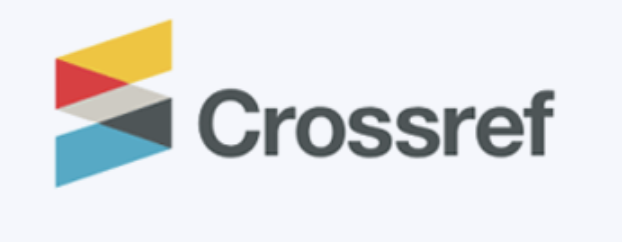Teaching Strategies Preferences of Male and Female English Teacher in SMPN 4 Singaraja
DOI:
https://doi.org/10.52217/ijlhe.v8i2.1906Keywords:
EFL, Gender, Preferences, Teaching StrategiesAbstract
The aim of this research is to obtain a profile of the most frequently used teaching strategies most frequently used by teachers based on the perspectives of two different genders; male and female. The strategies being observed were focused on the teaching strategies recommended by the new curriculum; Merdeka Curriculum. Data collection were done within 3 different instruments; teaching strategy checklist, observation checklist, and in-depth interview guide. This research involved one male teacher and one female teacher, conducted in SMPN 4 Singaraja. The findings showed that male teacher is tend to applied Deductive Application of Rules, a strategy part of Grammar Translation Method. On the other hand, female teacher sowed preferences in Guided Discovery strategy. Both of the teacher stated that the reason underlying their preferences is because of the material taught on the day and the students’ characteristics. This research also found that both of the teacher frequently applied social affective strategy, where teacher maintain students’ learning process by emphasizing the socio-emotional aspects. The findings can inform teacher training programs to tailor strategy selection based on both curriculum demands and the diverse instructional preferences of educators.
References
Ashour, E. H. A. E. (2022). The Effectiveness of Guided Discovery Strategy in Developing EFL Preparatory School Pupils’ Writing Skills [Menoufia University, Faculty of Education,]. https://doi.org/10.21608/muja.2022.260125
Dewaele, J. M., Saito, K., & Halimi, F. (2022). How teacher behaviour shapes foreign language learners’ enjoyment, anxiety and attitudes/motivation: A mixed modelling longitudinal investigation. Language Teaching Research, 2022. https://doi.org/10.1177/13621688221089601
Eckert, P., & Mcconnel-Ginet, S. (2013). Penelope Eckert - Language and Gender-Cambridge University Press (2013).
Erlinda Kurniatillah, R., Husna, N., Alek, A., Hidayat, D. N., & Hamid, F. (2024). Male and Female EFL Teachers’ Mood Structure in Classroom Interaction. Jurnal Onoma: Pendidikan, Bahasa, Dan Sastra, 10(2), 1452–1462. https://doi.org/10.30605/onoma.v10i2.3469
Hayati, A. R., Afriani, Z. L., & Akbarjono, A. (2021). Teacher’s Teaching Strategies in EFL Class. Jadila: Journal of Development and Innovation in Language and Literature Education, 1(3), 330–341. https://doi.org/10.52690/jadila.v1i3.126
Hosaini, Kurniawati, Y., Fitrina, Ns. Y., Rahayu, E. P., Suarnatha, I. P. D., Haqiyah, A., Oktavia, N. T., & Rizka, B. (2022). Metode dan Model Pembelajaran untuk Merdeka Belajar: Model Pembelajaran Flipped Classroom (First Edit). CV Kreator Cerdas Indonesia.
Lacey, C. H., Saleh, A., & Gorman, R. (1998). Teaching Nine to Five: A Study of the Teaching Styles of Male and Female Professors. Women in Educational Leadership Annual Conference.
Larsen-Freeman, D., & Anderson, M. (2013). Techniques-Principles-Language-Teaching (Third Edit). Oxford University Press.
Mappaita, S. P., Weda, S., & Patak, A. A. (2023). Speech Styles used by male and female Teachers in English Language interaction at Junior High School. Journal of Art, Humanity & Social Studies, 3(1), 335–347.
Ma’rifattulloh, R. I. N. (2019). An Analysis On Strategy Used by Male and Female Teacher in Teaching Reading Comprehension at SMK N 2 Sragen in 2018/2019 Academic Year.
Martha, A. N., & Ifeyinwa, E. C. (2024). The Influence of Male and Female Teachers ’ Teaching Strategies in Writing Achievement in Secondary Schools in Jalingo Local Government Area of Taraba State. International Journal of Research Publication and Reviews, 5(2), 184–188.
Masmida Putri, Y., Hanani, S., & Sesmiarni, Z. (2023). The Application of the Merdeka Curriculum in the Context of Learning Recovery. TOFEDU: The Future of Education Journal, 2(4), 575–581. https://doi.org/10.61445/tofedu.v2i4.91
Miles, M. B., & Huberman, A. M. (1994). Qualitative Data Analysis. In CEUR Workshop Proceedings (Second Edi, Vol. 1304). SAGE Publications, Inc.
Nguyen, H. D., Mai, L. T., & Anh Do, D. (2020). Innovations in creative education for tertiary sector in Australia: present and future challenges. Educational Philosophy and Theory, 52(11), 1149–1161. https://doi.org/10.1080/00131857.2020.1752190
Rajagopalan, I. (2019). Concept of Teaching. Shanlax International Journal of Education, 7(2), 5–8. https://doi.org/10.34293/ education.v7i2.329
Ratnadi, N. N. A., Nitiasih, P. K., & Padmadewi, N. N. (2014). A Descriptive Study of Male and Female Teachers’ Preferences of Strategies Used for Teaching Speaking in SMPN 1 Singaraja. E-Journal Program Pascasarjana Universitas Pendidikan Ganesha Program Studi Pendidikan Bahasa Inggris, 3.
Rosi, F. (2024). Grammar-Translation Method : Is it still Applicable Nowadays ? 2(1).
Taslim, T., Mahmud, M., & Burhamzah, M. (2023). Speech Styles of Male and Female Teachers in EFL Classroom Interaction. Journal of Excellence in English Language Education, 2(2), 152–171.
Wang, Y. (2012). Education in a changing world : flexibility, skills, and employability. In International Bank for Reconstruction and Development / International Development Association or The World Bank. The World Bank.
Wilfitri, E., & Suganda, S. P. (2023). Teacher Voices of Gender Representation in EFL Textbook: A case Study in a Senior High School. Lingua Didaktika: Jurnal Bahasa Dan Pembelajaran Bahasa, 17(2), 157. https://doi.org/10.24036/ld.v17i2.126204
Zahara, I. (2017). the Effectiveness of Using Guided Discovery in Teaching Reading Comprehension. Edukasi: Jurnal Pendidikan Dan Pengajaran, 4(2), 66–73. https://doi.org/10.19109/ejpp.v4i2.1563
Zhou, L. (2023). How To Develop 21st Century Skills in Students: The Role of Lego® Education. Science Insights Education Frontiers, 15(2), 2281–2283. https://doi.org/10.15354/sief.23.or216














